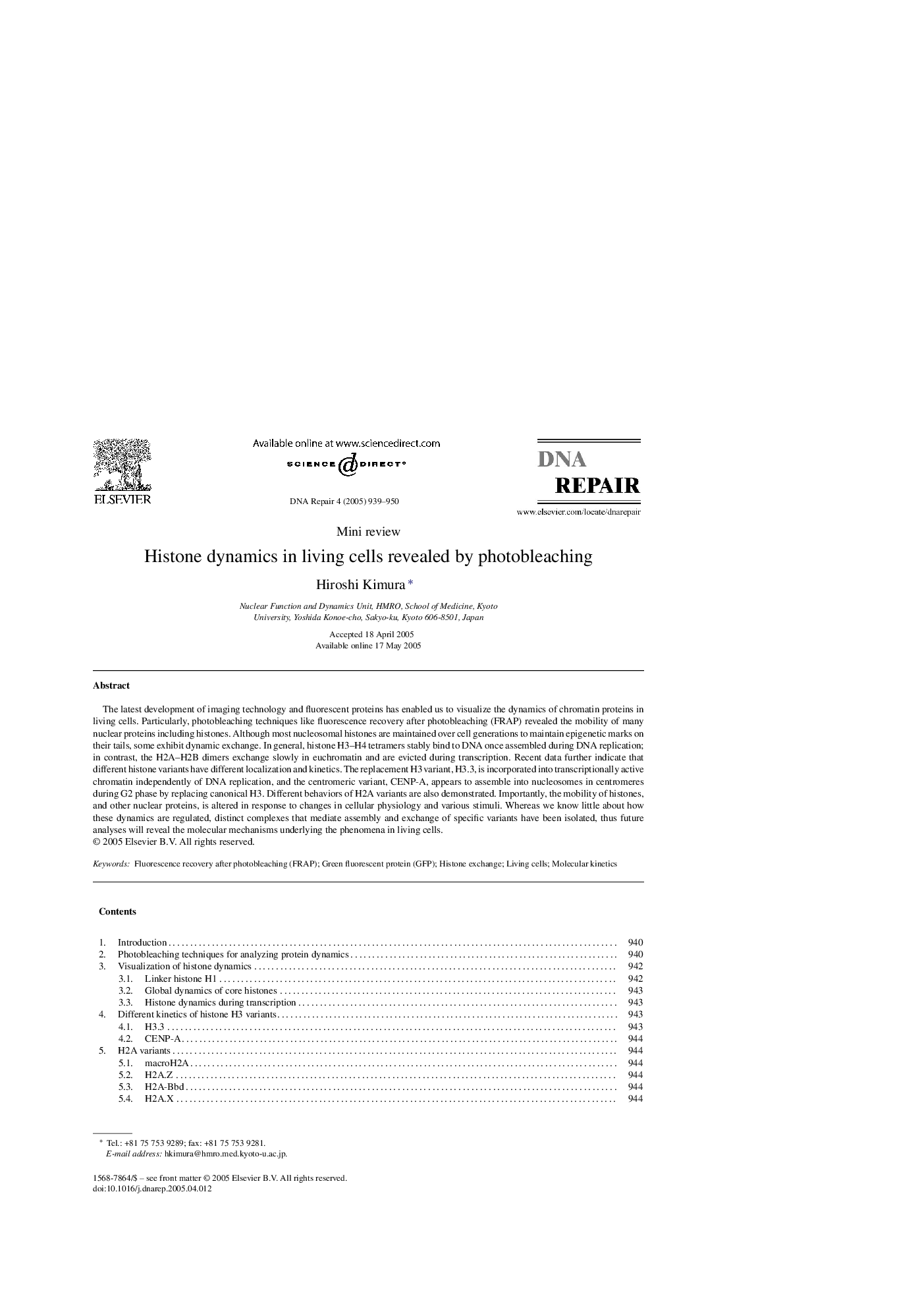| Article ID | Journal | Published Year | Pages | File Type |
|---|---|---|---|---|
| 10823651 | DNA Repair | 2005 | 12 Pages |
Abstract
The latest development of imaging technology and fluorescent proteins has enabled us to visualize the dynamics of chromatin proteins in living cells. Particularly, photobleaching techniques like fluorescence recovery after photobleaching (FRAP) revealed the mobility of many nuclear proteins including histones. Although most nucleosomal histones are maintained over cell generations to maintain epigenetic marks on their tails, some exhibit dynamic exchange. In general, histone H3-H4 tetramers stably bind to DNA once assembled during DNA replication; in contrast, the H2A-H2B dimers exchange slowly in euchromatin and are evicted during transcription. Recent data further indicate that different histone variants have different localization and kinetics. The replacement H3 variant, H3.3, is incorporated into transcriptionally active chromatin independently of DNA replication, and the centromeric variant, CENP-A, appears to assemble into nucleosomes in centromeres during G2 phase by replacing canonical H3. Different behaviors of H2A variants are also demonstrated. Importantly, the mobility of histones, and other nuclear proteins, is altered in response to changes in cellular physiology and various stimuli. Whereas we know little about how these dynamics are regulated, distinct complexes that mediate assembly and exchange of specific variants have been isolated, thus future analyses will reveal the molecular mechanisms underlying the phenomena in living cells.
Keywords
Related Topics
Life Sciences
Biochemistry, Genetics and Molecular Biology
Biochemistry
Authors
Hiroshi Kimura,
